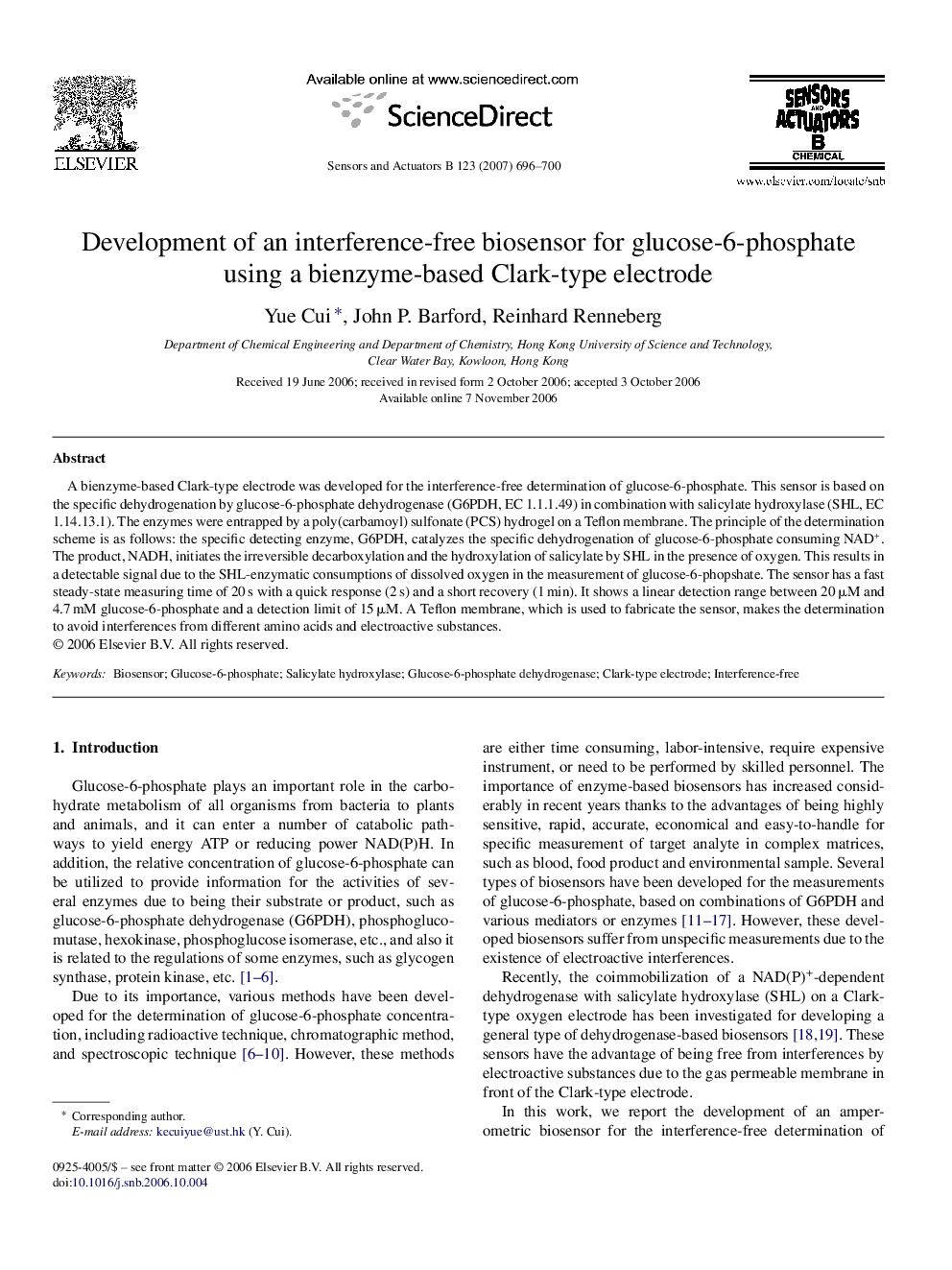| Article ID | Journal | Published Year | Pages | File Type |
|---|---|---|---|---|
| 745860 | Sensors and Actuators B: Chemical | 2007 | 5 Pages |
A bienzyme-based Clark-type electrode was developed for the interference-free determination of glucose-6-phosphate. This sensor is based on the specific dehydrogenation by glucose-6-phosphate dehydrogenase (G6PDH, EC 1.1.1.49) in combination with salicylate hydroxylase (SHL, EC 1.14.13.1). The enzymes were entrapped by a poly(carbamoyl) sulfonate (PCS) hydrogel on a Teflon membrane. The principle of the determination scheme is as follows: the specific detecting enzyme, G6PDH, catalyzes the specific dehydrogenation of glucose-6-phosphate consuming NAD+. The product, NADH, initiates the irreversible decarboxylation and the hydroxylation of salicylate by SHL in the presence of oxygen. This results in a detectable signal due to the SHL-enzymatic consumptions of dissolved oxygen in the measurement of glucose-6-phopshate. The sensor has a fast steady-state measuring time of 20 s with a quick response (2 s) and a short recovery (1 min). It shows a linear detection range between 20 μM and 4.7 mM glucose-6-phosphate and a detection limit of 15 μM. A Teflon membrane, which is used to fabricate the sensor, makes the determination to avoid interferences from different amino acids and electroactive substances.
